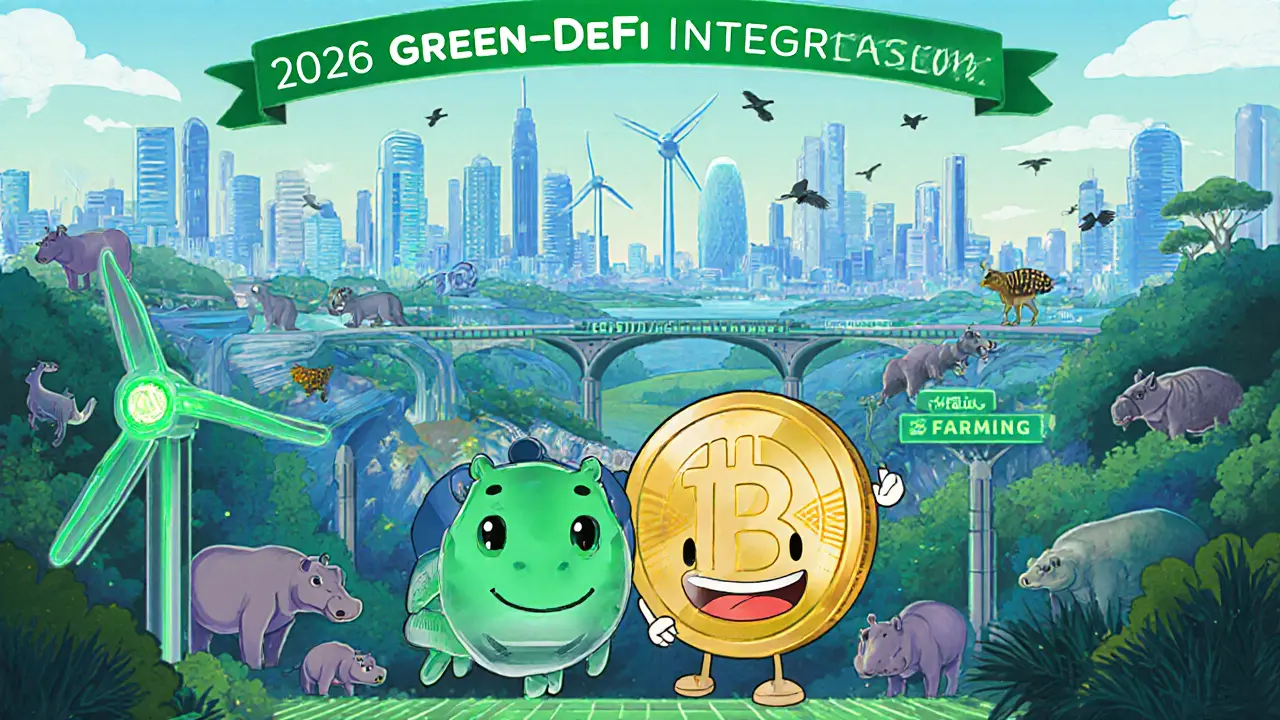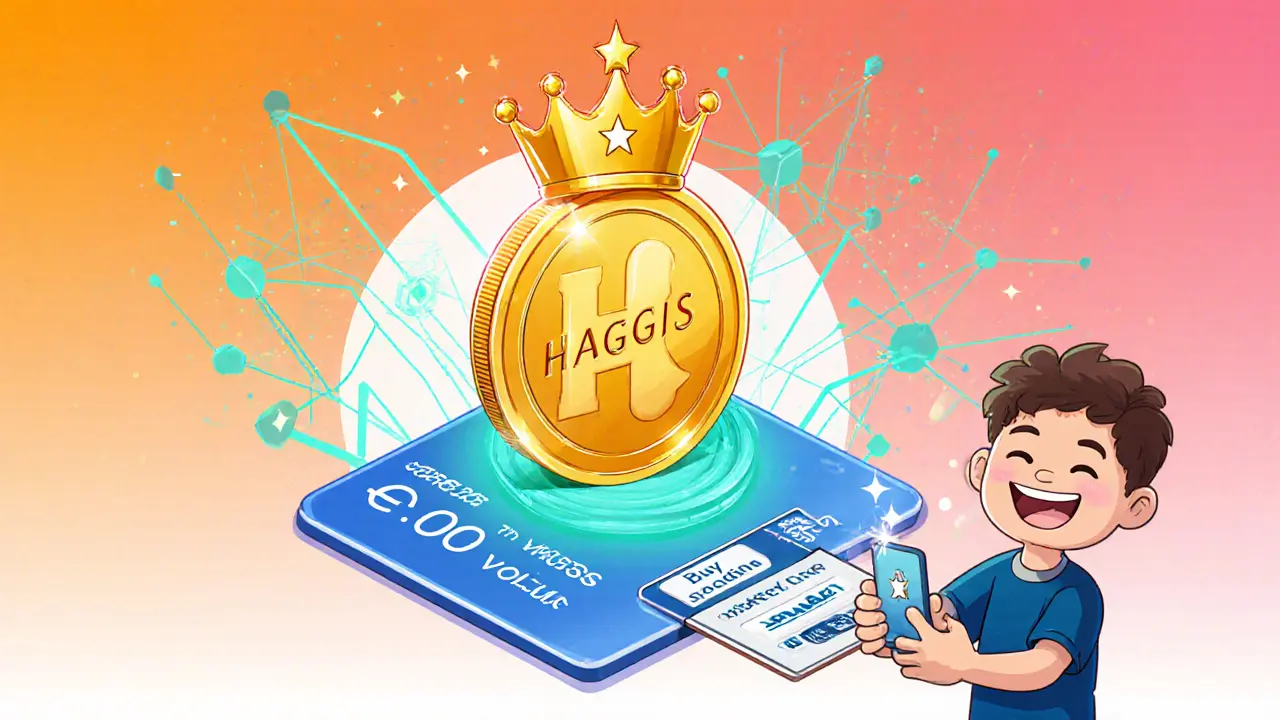HAGGIS Crypto Impact Calculator
HAGGIS Token Information
Current Price: $0.00004314
24h Volume: $150,420
Market Cap: ~$5 million
Blockchain: Solana
Charitable Tax: 2-5% on each transaction
Conservation Impact
Each transaction automatically donates 2-5% to wildlife conservation projects.
Projects supported include habitat restoration, anti-poaching patrols, and breeding programs.
Recent impact: 2 small-scale habitat restoration projects in Southeast Asia.
Community Governance
Token holders vote on which projects receive funding.
Voting power = Staked HAGGIS amount.
Join the governance process by staking your tokens.
Calculate Your Impact
Impact Summary
Transaction Amount: $0.00
Charitable Donation: $0.00
This donation supports:
- Habitat restoration for endangered species
- Anti-poaching patrol operations
- Breeding programs for threatened wildlife
Risk Factors
- Limited public information on founding team
- No formal security audit
- Dependency on community engagement
- Regulatory uncertainty
Treat HAGGIS as a speculative, mission-driven asset.
New Born Haggis Pygmy Hippo (HAGGIS) is a community‑driven cryptocurrency token built on the Solana blockchain that funds wildlife conservation projects. Launched in early 2024, the token blends fast, cheap on‑chain transactions with a mission to protect endangered species. If you’ve seen the price ticker flashing $0.00004314, you’re looking at a very small‑cap asset that nevertheless draws a surprisingly active niche community.
Quick Takeaways
- HAGGIS runs on Solana, so transactions settle in seconds and cost fractions of a cent.
- The token’s core purpose is to channel a share of every trade into wildlife‑conservation initiatives.
- Token holders vote on which projects receive funding via a decentralized governance model.
- Current 24‑hour volume sits around $150k, indicating modest but steady interest.
- Investors should weigh the novelty of the mission against limited public data on the team and roadmap.
Technical Foundations on Solana
The token lives on Solana blockchain, a proof‑of‑history network that can process thousands of transactions per second. Because Solana’s fee structure is measured in micro‑dollars, sending HAGGIS to a friend or a conservation charity costs almost nothing. This low‑cost environment is essential when the community wants to make many small donations without eroding the value of the token.
Every move of HAGGIS is governed by a smart contract. The contract enforces the tokenomics, locks the portion reserved for charitable disbursement, and records each holder’s voting power. Audits have not been publicly released, so users should treat the code as “unverified” until a reputable third‑party audit appears.
Why Wildlife Conservation Matters to the Token
Unlike many meme‑style coins that exist solely for speculation, HAGGIS positions itself as a wildlife conservation initiative. A pre‑defined slice-typically 2‑5% of each transaction-flows into a community‑controlled fund. The fund is earmarked for projects that protect endangered animals, with a current focus on pygmy hippos, pangolins, and other obscure species that rarely get headline attention.
The project’s founders claim that every token holder indirectly contributes to habitat preservation, anti‑poaching patrols, and breeding programs. While exact dollar‑for‑dollar impact numbers are still emerging, early reports suggest that the fund has already supported two small‑scale habitat restoration projects in Southeast Asia.
Community Governance: Who Gets to Decide?
HAGGIS adopts a community governance model similar to other decentralized projects. Holders can submit proposals through a Discord‑linked portal, and voting power is proportional to the number of tokens staked. Proposals have ranged from the selection of new conservation partners to tweaks in tokenomics, such as adjusting the charitable tax rate.
This approach keeps the project from being a top‑down charity. Instead, the community collectively decides where the money goes, ensuring alignment with the values of the majority of holders. For newcomers, joining the governance process is as simple as linking a Solana wallet, staking a modest amount of HAGGIS, and voting on the next proposal.

Market Snapshot and Risk Factors
As of October2025, HAGGIS trades around $0.00004314 with a 24‑hour volume of $150,420. The market cap hovers near $5million, placing it firmly in the micro‑cap category. Liquidity is limited to a handful of decentralized exchanges on the Solana ecosystem, meaning large orders can move the price noticeably.
Key risks include:
- Limited public information on the founding team and road‑map, which can hinder long‑term confidence.
- Absence of a formal security audit, raising the specter of smart‑contract vulnerabilities.
- Dependency on community engagement; if the volunteer base dwindles, funding streams may stall.
- Regulatory uncertainty around charitable crypto tokens, especially in jurisdictions that scrutinize donation‑linked assets.
Potential investors should treat HAGGIS as a speculative, mission‑driven asset and allocate only a small portion of a diversified portfolio.
How to Acquire and Use HAGGIS
To get started, follow these steps:
- Set up a Solana‑compatible wallet (e.g., Phantom or Solflare).
- Buy SOL (Solana’s native coin) on a major exchange.
- Swap SOL for HAGGIS on a decentralized exchange such as Raydium or Orca.
- Stake your HAGGIS in the official governance portal to earn voting rights and a small staking reward.
- Participate in community polls to direct conservation funding.
Remember that each transaction carries a transaction fee measured in micro‑dollars, so even small donations remain cost‑effective.
Comparing HAGGIS with a Typical Solana Token
| Attribute | HAGGIS | Standard Solana Token |
|---|---|---|
| Primary Purpose | Funding wildlife conservation | General utility or speculation |
| Governance Model | Community‑driven proposals & voting | Often centralized or minimal |
| Transaction Fees | ~0.000005SOL (fractions of a cent) | Similar low‑cost structure |
| Charitable Tax on Trades | 2‑5% automatically routed | None |
| Typical Holder Profile | Eco‑conscious investors | Broad crypto audience |
Future Outlook and Partnerships
The team’s public statements hint at collaborations with DeFi platforms that share an environmental ethos. Think of a liquidity pool where a portion of yield farming rewards also supports conservation. While concrete agreements haven’t been disclosed, the roadmap mentions a “green‑DeFi integration” slated for 2026.
Should such partnerships materialize, HAGGIS could benefit from increased liquidity and broader exposure, potentially lifting the token’s utility beyond pure donation. However, until contracts are signed, this remains a hopeful projection.
Key Takeaway
If you’re looking for a crypto that aligns with animal‑rights values, HAGGIS crypto offers a transparent, low‑cost way to combine digital assets with real‑world impact. Just keep in mind the limited data, small market size, and the need for diligent personal research.

Frequently Asked Questions
What blockchain does HAGGIS run on?
HAGGIS is built on the Solana blockchain, which offers fast transaction finality and ultra‑low fees.
How does the token support wildlife conservation?
A built‑in tax of 2‑5% on every transfer is automatically sent to a community‑controlled fund that finances habitat restoration and anti‑poaching projects.
Can I vote on where the funds go?
Yes. By staking HAGGIS in the governance portal, you earn voting power proportional to the amount you lock, allowing you to propose and decide on conservation initiatives.
Where can I buy HAGGIS?
You need a Solana wallet, then you can swap SOL for HAGGIS on decentralized exchanges like Raydium, Orca, or any Serum‑based market that lists the token.
Is there a security audit for the smart contract?
As of now, the project has not published a third‑party audit. Potential investors should treat the contract as unaudited and consider the associated risk.


Tilly Fluf
Dear community, I appreciate the initiative to channel cryptocurrency transactions toward wildlife preservation, and I commend the transparency of the tokenomics presented. The integration of a charitable tax on each transfer offers a novel mechanism to fund conservation projects, which may inspire similar efforts in the sector. I look forward to observing the tangible outcomes of the habitat restoration and anti‑poaching programs cited.